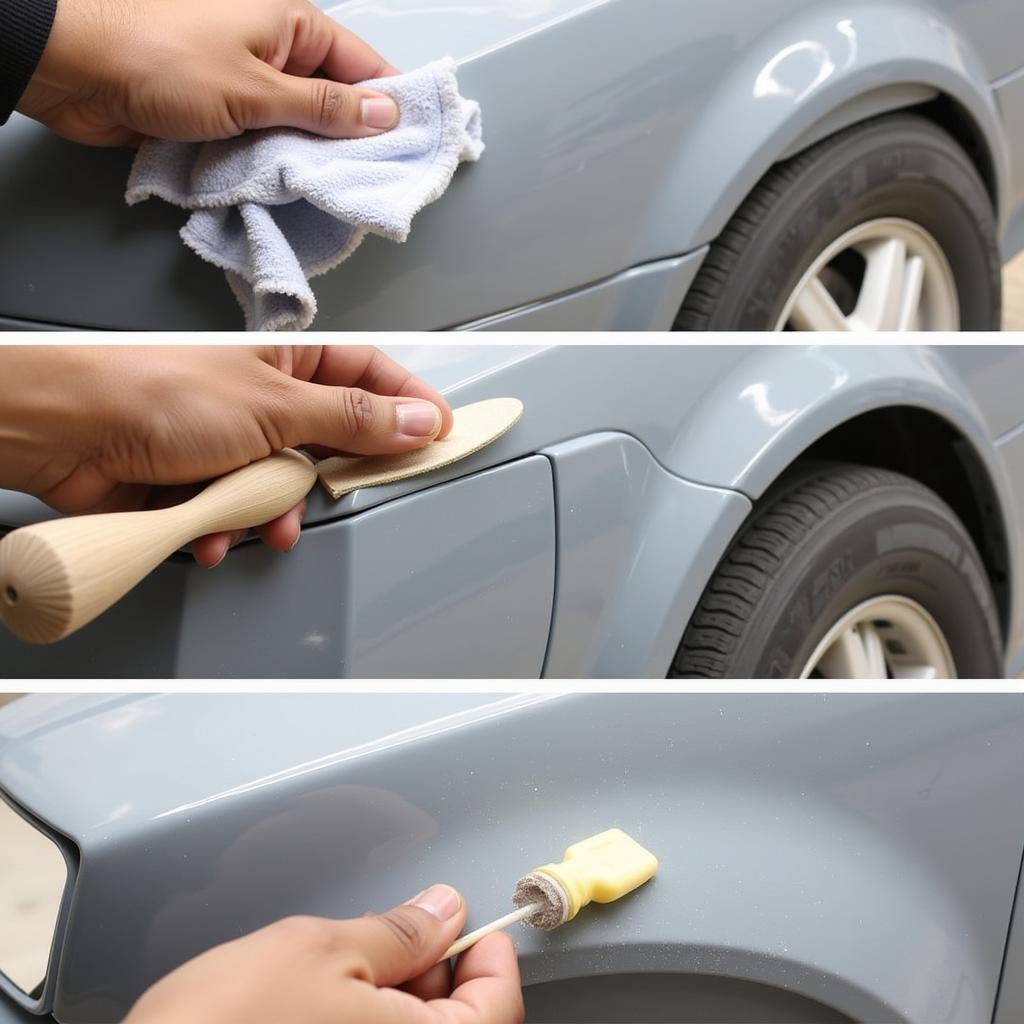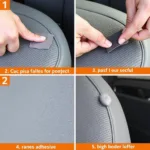Restoring your car’s silver plastic parts with the right car repair plastic silver paint can dramatically improve its appearance. This guide dives deep into the nuances of choosing, applying, and maintaining that perfect silver finish.
Understanding Car Repair Plastic Silver Paint
Choosing the right car repair plastic silver paint is crucial for a professional-looking finish. Factors like paint type, finish, and application method significantly impact the final result. Let’s explore the different aspects of selecting the ideal silver paint for your plastic car parts.
Types of Car Repair Plastic Silver Paint
Several types of car repair plastic silver paint are available, each with its own advantages and disadvantages. Acrylic lacquer paints are easy to apply and dry quickly, making them a popular choice for DIY repairs. Enamel paints, on the other hand, offer superior durability and resistance to chipping and fading. For a truly professional finish, consider using urethane paints, which offer exceptional durability and a high-gloss finish.
Choosing the Right Finish
The finish of your car repair plastic silver paint determines the final look of your repaired part. A gloss finish provides a shiny, reflective surface, while a matte finish offers a more subdued, non-reflective look. Satin finishes fall somewhere in between, offering a subtle sheen. Consider the original finish of your car’s plastic parts when choosing the right finish for your repair.
Surface Preparation: The Key to a Lasting Finish
Proper surface preparation is vital for ensuring the paint adheres correctly and provides a long-lasting finish. Thoroughly clean the plastic surface with a suitable plastic cleaner and degreaser. Lightly sand the surface to create a slightly rough texture, which will help the paint adhere better. If the plastic is damaged, use a plastic filler to repair any cracks or dents before painting.
 Preparing the Plastic Surface for Painting
Preparing the Plastic Surface for Painting
Applying Car Repair Plastic Silver Paint
Applying car repair plastic silver paint requires patience and attention to detail. Use thin, even coats to avoid runs and drips. Allow each coat to dry completely before applying the next. For optimal results, apply several thin coats rather than one thick coat.
Spray Painting vs. Brush Painting
Spray painting provides a smooth, even finish, while brush painting offers more control and is ideal for smaller areas. Choose the application method that best suits your skill level and the size of the area you are repairing.
Protecting Your Newly Painted Surface
Once the final coat of paint has dried, apply a clear coat to protect the finish and enhance its durability. The clear coat will also provide UV protection, preventing the silver paint from fading over time.
Maintaining Your Silver Plastic Car Parts
Maintaining your newly painted silver plastic parts is essential for preserving their appearance. Regularly wash and wax the parts to protect them from the elements. Avoid using harsh chemicals or abrasive cleaners, which can damage the paint.
Conclusion
Repairing your car’s silver plastic components with car repair plastic silver paint can revitalize its overall look. By carefully selecting the right paint, meticulously preparing the surface, and applying the paint correctly, you can achieve a professional-looking finish that will last for years.
FAQs
- What is the best type of car repair plastic silver paint for beginners?
- How do I prepare the plastic surface for painting?
- How many coats of paint should I apply?
- What is the purpose of a clear coat?
- How do I maintain my newly painted silver plastic parts?
- Can I use regular car paint on plastic parts?
- What should I do if the paint runs or drips?
When you need support, please contact us via WhatsApp: +1(641)206-8880, Email: [email protected]. We have a 24/7 customer support team.


